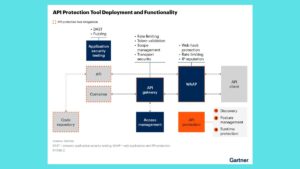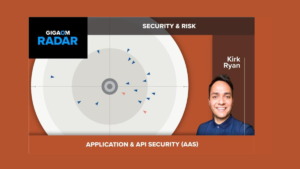HR Technology Trends and Priorities: Shaping the Future of Work

The landscape of human resources is continuously evolving, driven by advancements in technology and changing workforce expectations. As organizations strive to create more efficient, engaging, and agile workplaces, HR technology has become a critical enabler of transformation. From automating mundane tasks to enhancing strategic decision-making, the latest HR tech trends are helping companies redefine how they manage and nurture talent.
In this blog, we will explore the key HR technology trends and priorities that are shaping the future of work, offering insights into how organizations can leverage these innovations to stay competitive and meet the needs of their workforce.
1. AI and Machine Learning: Driving Intelligent HR Decisions
Artificial intelligence (AI) and machine learning (ML) are no longer buzzwords—they are essential components of modern HR technology. AI-powered tools are transforming how HR teams operate, offering intelligent solutions for talent acquisition, employee engagement, performance management, and more.
Key Applications:
- Recruitment Automation: AI-driven applicant tracking systems (ATS) can screen resumes, match candidates to job requirements, and even conduct initial interviews using chatbots, significantly reducing the time and effort involved in hiring.
- Predictive Analytics: AI and ML algorithms can analyze vast amounts of employee data to predict trends such as turnover risk, identifying high-potential employees, and forecasting workforce needs.
- Personalized Learning and Development: AI can tailor learning paths based on an employee’s role, skills, and career goals, providing personalized development opportunities that drive growth and retention.
Priority: HR leaders are prioritizing AI to enhance decision-making, improve efficiency, and deliver personalized employee experiences.
2. Employee Experience Platforms: Focusing on Well-Being and Engagement
The shift towards employee-centric workplaces is driving the demand for platforms that enhance the overall employee experience. Organizations are increasingly investing in tools that support well-being, engagement, and a positive work culture.
Key Features:
- Wellness Apps: Platforms that provide resources for mental health, stress management, and work-life balance are becoming standard as companies focus on holistic employee well-being.
- Engagement Surveys and Feedback Tools: Real-time feedback and pulse surveys help HR teams gauge employee sentiment, identify issues, and take proactive steps to improve engagement.
- Recognition and Rewards Systems: Tools that facilitate peer recognition and rewards are helping to build a culture of appreciation and motivate employees.
Priority: Enhancing employee experience is a top priority as organizations recognize the link between engagement, productivity, and retention.
3. Remote and Hybrid Work Solutions: Supporting the New World of Work
The COVID-19 pandemic accelerated the adoption of remote and hybrid work models, and HR technology has been at the forefront of enabling this shift. As remote work becomes a permanent fixture, organizations are investing in solutions that support distributed teams.
Key Tools:
- Virtual Onboarding: Digital onboarding platforms ensure that new hires have a seamless introduction to the company, regardless of their location.
- Collaboration and Communication Tools: Platforms like Slack, Microsoft Teams, and Zoom are essential for keeping remote teams connected and productive.
- Remote Performance Management: Tools that allow for continuous feedback, goal tracking, and performance reviews in a remote setting are critical for managing distributed teams effectively.
Priority: Building robust remote and hybrid work infrastructures is a top priority, ensuring that all employees have the tools they need to succeed, whether working from home or the office.
4. Advanced Analytics: Turning Data into Actionable Insights
Data-driven decision-making is a cornerstone of modern HR strategy. Advanced analytics tools are empowering HR teams to turn data into actionable insights, driving strategic initiatives across the organization.
Key Capabilities:
- Workforce Planning: Analytics can help predict future workforce needs, identify skills gaps, and develop talent strategies that align with business goals.
- Diversity and Inclusion Metrics: Tools that track diversity metrics enable organizations to monitor progress and ensure that their D&I initiatives are effective.
- Real-Time Dashboards: Interactive dashboards provide HR leaders with a real-time view of key metrics, such as employee engagement, turnover rates, and recruitment performance.
Priority: Leveraging data analytics to make informed, strategic decisions is a growing priority for HR leaders aiming to enhance organizational performance.
5. Cloud-Based HR Solutions: Enhancing Flexibility and Scalability
Cloud-based HR solutions are becoming the norm as organizations seek flexible, scalable systems that can adapt to changing needs. Cloud platforms offer numerous benefits, including ease of access, regular updates, and the ability to scale quickly as the business grows.
Key Advantages:
- Accessibility: Cloud-based systems allow employees and HR teams to access information from anywhere, supporting remote work and global teams.
- Cost Efficiency: Cloud solutions often have lower upfront costs compared to on-premises systems and provide the flexibility to pay for only the features needed.
- Automatic Updates: Regular updates ensure that the software is always current, with the latest features and security enhancements.
Priority: Adopting cloud-based HR solutions is a priority for organizations seeking to improve flexibility, reduce costs, and support a more dynamic workforce.
6. HR Tech Ecosystems: Integration and Interoperability
As the HR tech landscape grows more complex, the need for integration and interoperability among different systems is becoming increasingly important. Organizations are moving towards creating HR tech ecosystems where various tools and platforms work together seamlessly.
Key Focus Areas:
- API Integrations: Open APIs enable different HR tools to connect and share data, providing a unified view of the workforce.
- Unified Platforms: Comprehensive HR suites that cover multiple functions (e.g., payroll, benefits, performance management) reduce the need for multiple vendors and simplify HR operations.
- Single Sign-On (SSO): SSO capabilities enhance user experience by allowing employees to access multiple HR tools with a single login.
Priority: Building integrated HR tech ecosystems is a priority for organizations looking to streamline operations and reduce complexity.
7. Emphasis on Data Privacy and Security
With the increased reliance on digital tools comes the heightened responsibility of protecting employee data. HR technology systems must prioritize data privacy and security to comply with regulations and maintain employee trust.
Key Considerations:
- Compliance with Regulations: Ensuring that HR tech solutions comply with data protection laws, such as GDPR and CCPA, is critical.
- Robust Security Measures: Advanced encryption, regular security audits, and access controls are essential to safeguarding sensitive employee information.
- Transparent Data Practices: Clear communication about data collection, usage, and protection builds trust with employees and stakeholders.
Priority: Enhancing data privacy and security measures is a top priority for HR leaders as they navigate the complexities of digital transformation.
Conclusion
The future of HR technology is bright, with numerous trends and innovations poised to reshape how organizations manage their people. From AI-driven insights and employee experience platforms to cloud-based solutions and integrated ecosystems, HR tech is empowering organizations to become more agile, data-driven, and employee-centric.
As HR leaders prioritize these technologies, they are not just investing in tools but in the future of their workforce. By embracing the latest HR tech trends and addressing key priorities, organizations can build a resilient, engaged, and high-performing workforce that is ready to meet the challenges of tomorrow.






